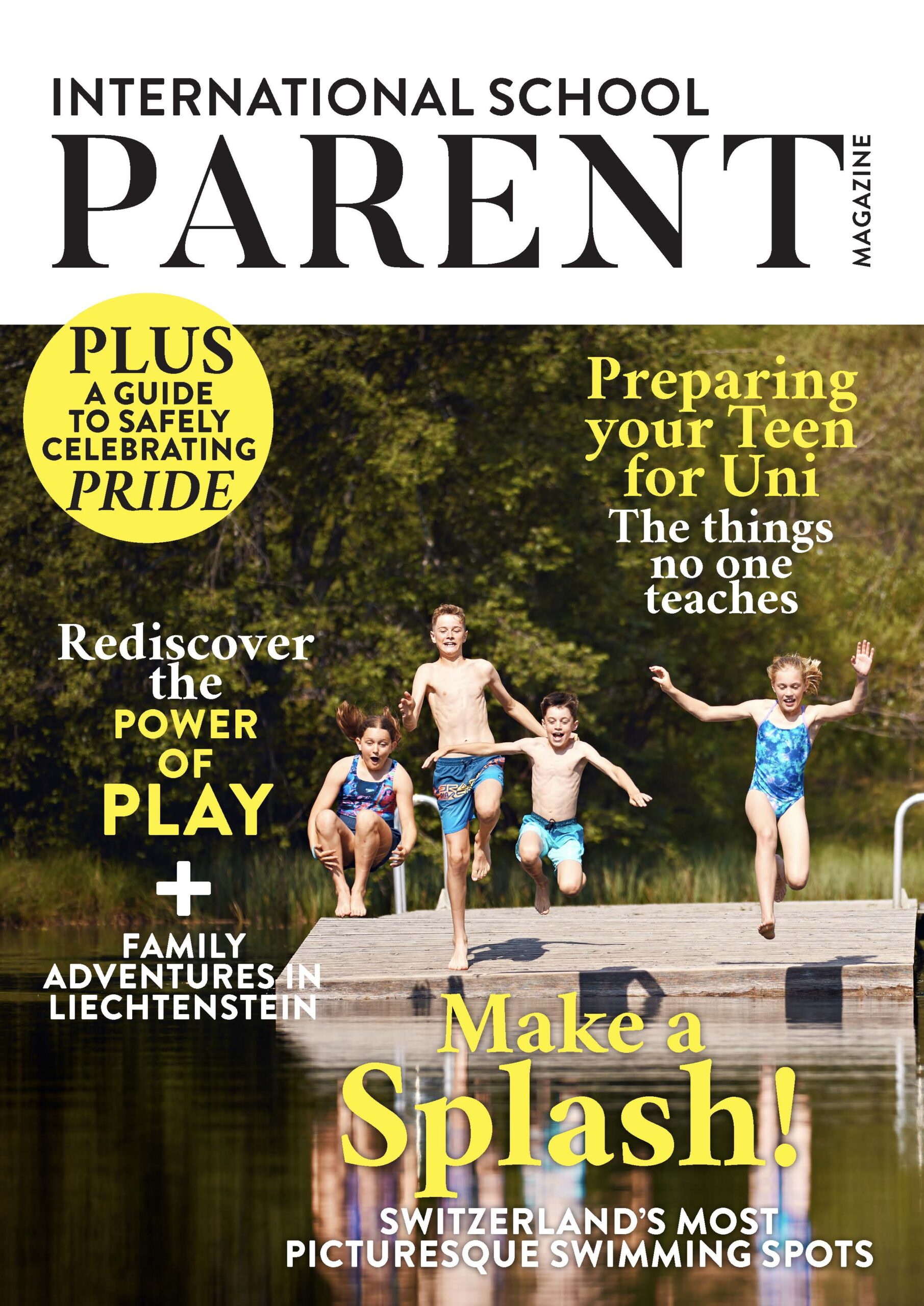“I want to be an inventor…”– ISL primary students are being inspired by our new STEAM Innovation Lab and classes

Working in teams, a group of ISL primary students create a bridge structure that will be strong enough to enable a car to cross a river.
Primary students at the International School of Lausanne are revelling in the opportunities for challenge, creativity, and teamwork provided by our new STEAM – Science, Technology, Engineering, Arts & Mathematics – classes and Innovation Lab. Part of raising the profile of science and technology in our learning community, having the children visit the Innovation Lab every week allows them to investigate elements from their IB PYP Units of Inquiry in an environment tailored for the teaching and learning of STEAM subjects. Read on to discover how the students are being inspired by their experiences…
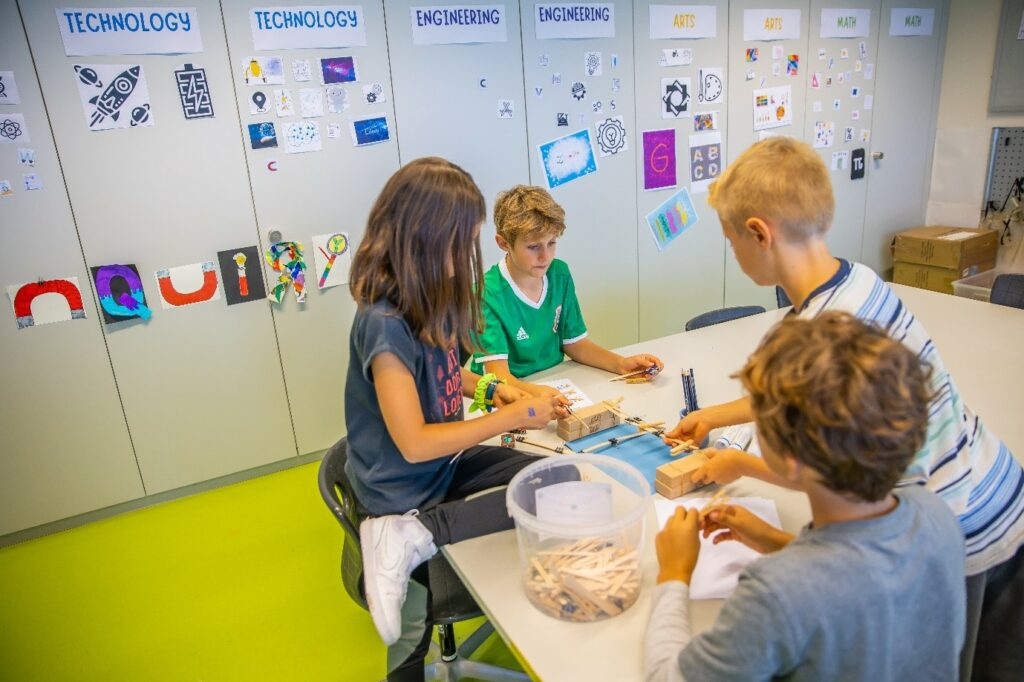
It is an unseasonably cold and rainy September morning as the Year 5 class clusters through the open door of ISL primary’s Innovation Lab, but as the room fills up with excited children, the mood is bright and cheerful.
“We have a new challenge?” someone exclaims, seeing the lesson plan projected on a white board. “Cool!”
“What is today’s challenge?” their friend chimes in, as the students stream to their seats, eager to inspect the carefully prepared materials on their desks.
On the board, the “problem” of the lesson is posed: “How will we get across to the other side? What could help us get there?”
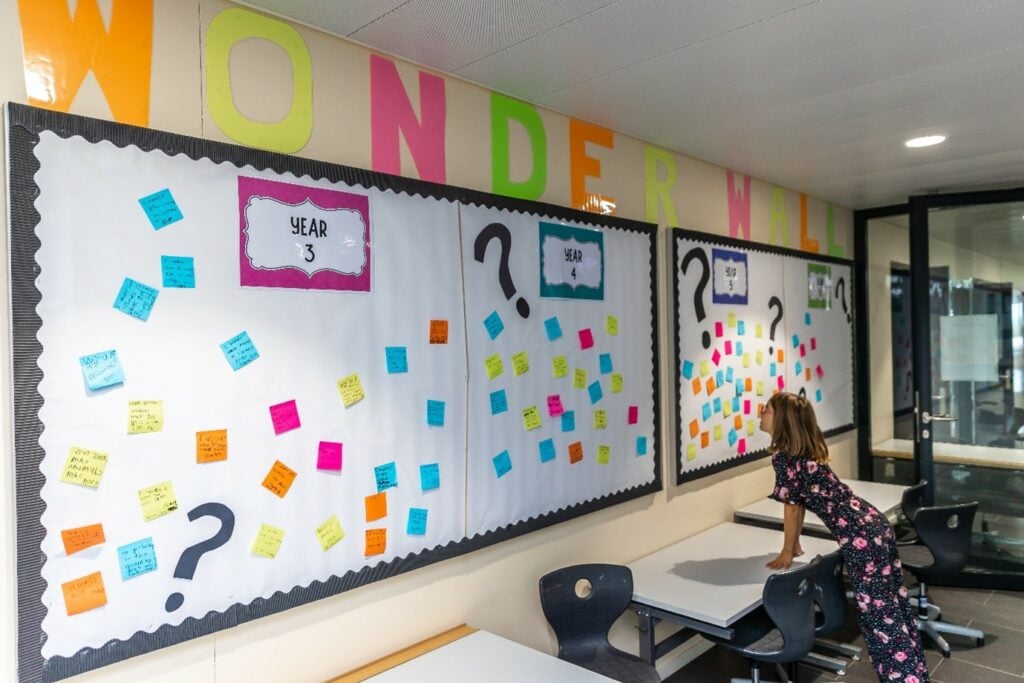
Enthused by the challenge of the lesson, a group of Year 5 budding engineers investigate the materials that they will use to create a bridge across a river, while their teacher, Ms Wislang, explains the lesson “problem”.
On the tables, a sheet of blue paper represents a river; a bucket is filled with the materials the students can use to create a structure over the river; flanking the riverbanks are sets of toy cars, each awaiting to find if the learners’ engineering skills will see them safely across the river, or deposit them into the “water”.
Their fate rests on the students’ ability to innovate and collaborate…
“A key part of the learning involves developing the students’ team-work skills,” explains Ms Wislang, the International School of Lausanne’s new teacher of STEAM. “It has been wonderful to see the students working within different groups each lesson, and observing them individually as collaborators. Each student is able to self-assess and check in on themselves to see how they are as a teammate. From there, they make goals on how they will improve during the next lesson.”
As Ms Wislang concludes her explanation of the learning goals, a buzz of conversation fills the room – the students tip the materials from the bucket on their desk, and begin discussing how they can use these to build a sturdy bridge.
Working together, the teams must use only the materials from the bucket on their desks in order to solve the lesson “problem”; today, this is creating a strong bridge structure to get toy cars across a river.

“I’m interested in architecture and interior design,” says Nina (Year 5), “so I feel like only being allowed to use the materials in the bucket each lesson to achieve the goal is a good experience for me to learn about managing a budget one day.”
“Lots of experiments have been hard,” adds her friend, Adele (Year 5). “Last time, we had to make a tower out of pencils, which was difficult because we couldn’t make them balance, so we just kept trying different ways. We learned that we have to be flexible and use the tools around us.”
Mr Armistead (Primary School Principal) and Mr Hawkins (Primary School Assistant Principal, IB PYP Coordinator) are delighted with the positive feedback the new STEAM lessons have received.
Ms Wislang, the International School of Lausanne’s new teacher of STEAM in the primary school, beside a board showing a class’s reflections on what helped and hindered in a previous experiment.
“Every single day, a different parent approaches me to share how excited their children are about STEAM and what they are doing in Ms Wislang’s classes,” shares Mr Armistead, with his characteristic enthusiasm.
“The programme complements the rest of the primary curriculum by further allowing the students to hone a range of skills and qualities. In addition to refining their collaboration skills, the students develop their thinking, communication, self-management, research and social skills; they understand and apply the Design Process; and they are empowered as they begin to see themselves as creative problem-solvers, innovators, and scientists.”
Another aspect of the STEAM lessons that the students are particularly aware and appreciative of is the opportunity that they are given to express voice and choice, and to take ownership of their learning.
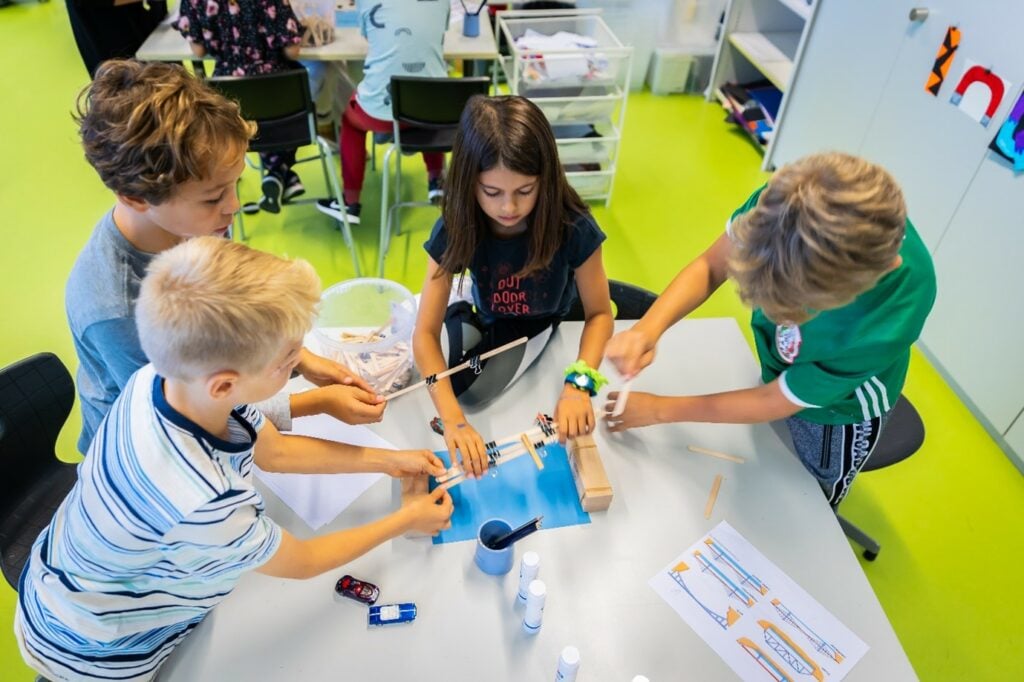
“The cool thing is that we can write our questions on a sticky note and put them on the Wonder Wall; and so, for example, I put ‘are we going to make an exploding volcano’, so we might get to do this at some point this year!” exclaims Adele.
“I think it’s interesting how our teacher doesn’t only care what she wants to do, but about what we want to learn, which makes lessons really fun!” Nina beams.
The ISL primary students are loving the opportunity that the Wonder Wall gives them to ask questions about STEAM, and express what they would like to learn in the Innovation Lab.
As a new member of the International School of Lausanne’s teaching faculty, Ms Wislang is as excited about the STEAM classes as her students are.
“The teaching environment at ISL is amazing,” she enthuses. “I love being able to give the students autonomy over their learning, and collaborating with the classroom teachers to ensure that my lessons are relevant within the curriculum and the students’ every day lives. I think that the STEAM classes are a particularly valuable learning opportunity for the ISL primary students, as it gives them a chance to fully explore their skills and talents – including ones that they never knew they had!”
As part of her introductory lessons, Ms Wislang let the students decide what the learning ethos of the Innovation Lab should be.
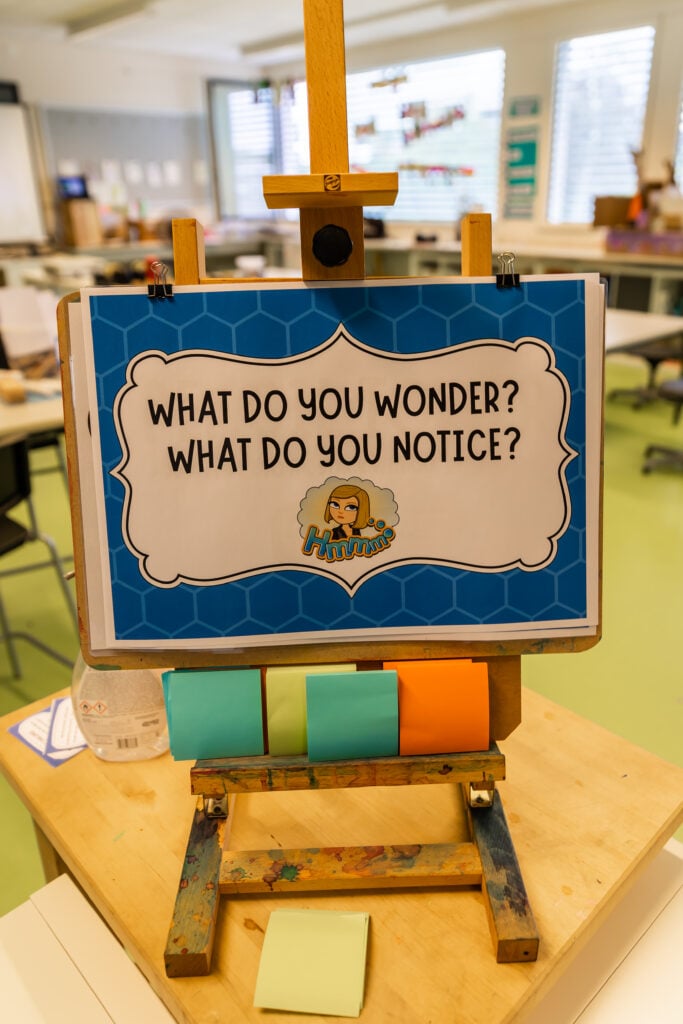
“In the words of the students themselves, it aims to be an Innovative, Open-Minded, Fun, Experimental, Inquiry-Based, Mistake-Making, Discovery-Seeking environment!”
The Y4 and Y6 classes, who are both working on Design units, created a window display to illuminate what the learning environment of the Innovation Lab should feel like, and produced wall displays around the classroom which make clever use of STEAM symbols as fonts.
Back in the Year 5 classroom, the lesson is coming to a close, and the students are given time to self-evaluate. The bridges themselves have had varying degrees of success – several toy cards have met a watery fate… – but the overall mood is exuberant as the learners reflect on the lesson.
“I like doing these experiments – today has been one of my favourites, because it was hard and challenging!” shares Lucas (Year 5).
Melina (Year 5), has some particularly wise words to share about the STEAM learning experience:
“I like building things, especially working in groups. Learning about science is fun, because I think I want to be a doctor someday, although I’m too young to decide – I have my whole future waiting! These classes help me with my creativity. If you work a lot, then nothing will stop you!”
The sense of possibility and empowerment expressed by Melina is further encapsulated in the words of fellow Year 5 student, Nina:
“I liked building the bridge because it was challenging, and I had to think a lot! I want to be an inventor AND an architect AND a scientist!”
With such engagement and enthusiasm already being shown by ISL’s young learners, we can’t wait to see where their STEAM journeys take them…
